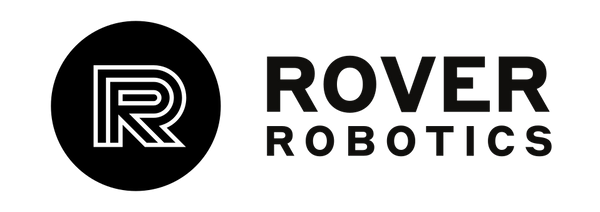All our Rover Robotics platforms have open and closed loop control methods, but which is right for your application? What is the difference between the two anyway? Here are some of the basics of the two modes and why you might want to choose one versus the other.
CLOSED LOOP
Closed-loop control is a control system where the output is regulated based on feedback from the system. In other words, the system continuously monitors its output and makes adjustments to achieve and maintain a desired state or performance. We name our closed loop mode independent wheel as each wheel can adjust its speed to maintain an overall target rate.
In mobile robots, closed-loop control is crucial for tasks like navigation and obstacle avoidance. Sensors like cameras, lidar, encoders, and gyroscopes provide information about the robot's position. The controller processes this sensor data, computes the error, and determines the required changes in motor commands to achieve the desired navigation or movement. Our system is only implementing odometry adjustments based off RPM's of the motors, but more sensors can be integrated to allow for even better tuning and handling.
OPEN LOOP
Closed-loop control systems are commonly preferred for their ability to adapt to changing conditions and provide accurate control, there are situations where open-loop control might be suitable.
- Open-loop systems are generally simpler and less expensive to implement because they don't require the feedback mechanisms and the complex control algorithms associated with closed-loop systems.
- Open-loop control is suitable when the system has a fixed setpoint or a predefined sequence of operations that doesn't require constant adjustments based on feedback.
- Processes that follow a predetermined sequence without the need for real-time correction may not benefit significantly from closed-loop control.
- Closed-loop systems introduce a delay due to the time it takes to sense, process, and act, which may be a limitation in high-speed applications.
- In some cases, closed-loop systems might introduce instability if not properly tuned or if there are limitations in the sensing or control mechanisms.
In summary, closed-loop control involves continuous monitoring of the robot's state through sensors, processing this information with a controller, and adjusting the robot's actuators to achieve and maintain the desired performance. This feedback loop allows mobile robots to navigate, avoid obstacles, and perform tasks with greater accuracy and adaptability.
Open loop does not check the robot state, but instead continues with the command as issued with no verification. This can be preferred for high-speed solutions, low variability environments, fixed points of operation, or to operate with limited sensors or computational ability.
As with almost everything in life, a mix of the two modes is often the best option for development. Be sure you understand your project and the requirements of the platform to make the best choice for your project.
